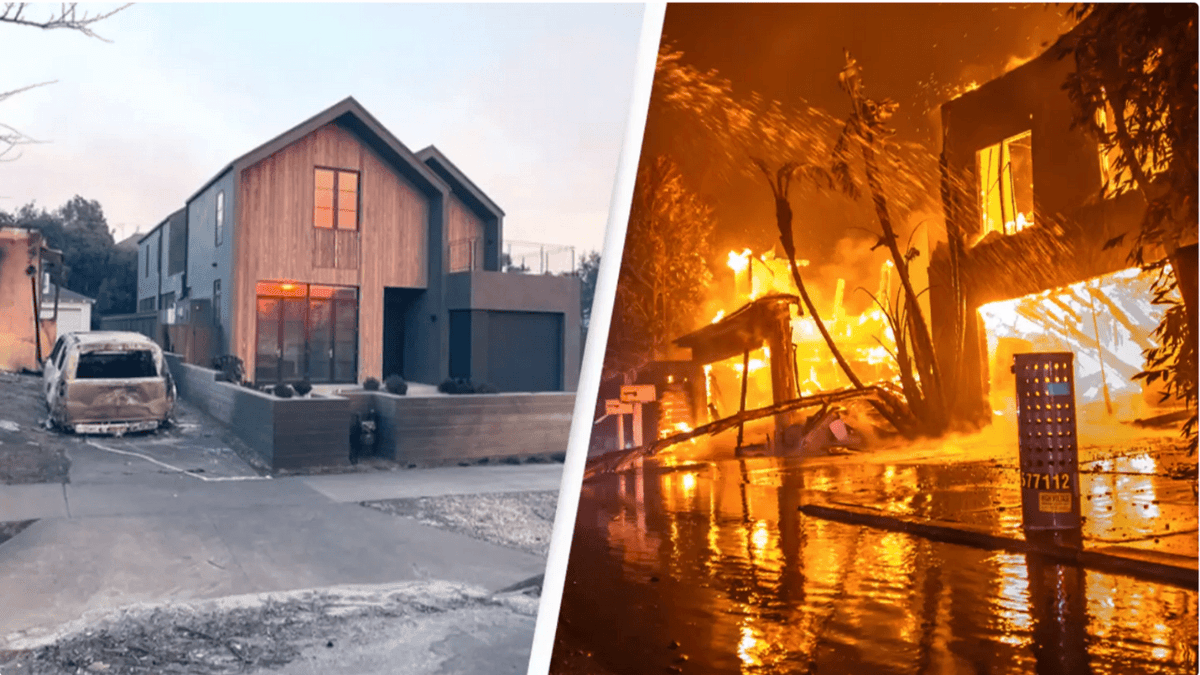Fire-Resistant House Survives California Wildfire
Discover fire-resistant material and technology for builders to build a safer home in wildfire risky area
by Sam Chen
|
At the start of 2025, tragedy struck the United States and captured the world’s attention. A devastating California wildfire tore through southern California, claiming 27 lives and destroying over 12,000 homes and buildings. Within hours, entire neighborhoods were reduced to ashes, leaving behind haunting scenes of charred ruins and smoke-filled skies. The wildfire continues to rage, with hundreds of homes being destroyed each day, turning this disaster into an unrelenting nightmare for the people of southern California.
Surprisingly, some homes remained remarkably untouched by the flames. How did these buildings survive while others surrounding them were lost?
As wildfires grow more frequent and intense due to climate change, understanding the building techniques and materials that make fire-resistant houses is more critical than ever. Today, we’ll explore the construction materials and techniques that can help build a home capable of withstanding wildfire risks.
Building Materials Selection
When it comes to wildfire resilience, the materials you choose for your home can mean the difference between survival and destruction. Let’s break down the key elements of fire-resistant house construction:
1. Fire-Resistant Siding
The siding of your home acts as its first line of defense against flames. Some materials are far more effective at withstanding high heat than others. Here are the best options:
Fiber Cement Siding: Made from a mix of cement, sand, and cellulose fibers, this material is highly durable and non-combustible. It’s also resistant to warping and cracking.
Metal Siding: Steel or aluminum siding doesn’t ignite and can withstand extreme heat, making it a great choice for wildfire-prone areas.
Brick or Stone Siding: Naturally fire-resistant and excellent at insulating against heat, these materials are some of the most robust options available.
Stucco: This plaster-like material is not only fire-resistant but also adds a sleek, modern look to homes.
Among these options, brick and stone are the most fireproof materials. They are naturally non-combustible, capable of withstanding extremely high temperatures, and do not release toxic fumes during a fire. However, they come at a higher cost and require a sturdy foundation due to their weight.
For a more affordable option, fiber cement siding is widely used and offers great fire resistance. It also allows for a broader range of designs and can be combined with materials like brick or stone for an appealing aesthetic that stands up to fire.
2. Fire-Resistant Roofing
Your roof is one of the most vulnerable parts of your home during a wildfire. Flying embers can land on it and ignite a blaze. Choosing the right roofing material is crucial:
Asphalt Shingles: A widely used and affordable roofing option that offers fire resistance, lasting up to two hours in a fire before catching.
Concrete and Clay Tiles: Fire-resistant roofing materials that add a unique Spanish or Mediterranean aesthetic to homes. However, they are heavier and may require additional structural support.
Slate: A durable and naturally beautiful option with excellent fire resistance. Like concrete and clay tiles, slate is heavy but offers long-lasting protection.
Metal Roofing: Lightweight, non-corrosive, and highly fire-resistant, metal roofs are available in various styles and finishes, including designs that mimic wood or stone.
Synthetic Roofing: Made from eco-friendly materials like polyurethane, synthetic shingles are a cost-effective, fire-resistant option. They are durable, versatile, and available in a wide range of colors and styles.
Metal and synthetic roofing are excellent choices for homeowners seeking a balance of style, durability, and low maintenance. Metal roofs offer a sleek, modern look and can mimic traditional materials like slate or wood while lasting 40-70 years. Synthetic roofing, on the other hand, replicates the appearance of premium materials like slate or clay tiles but is lighter, more affordable, and highly durable, lasting 30-50 years. Both options are Type A fire-resistant, making them ideal for areas with high fire risk.
3. Windows: Double-Paned Tempered Glass
Windows are often overlooked, but they can be a weak point during a wildfire. Single-pane glass can shatter from the heat, allowing flames to enter your home. Double-paned tempered glass, however, is far more resistant to heat and impact, providing an extra layer of protection.
4. Concrete Walls Between Houses
Spacing and barriers matter when it comes to wildfire prevention. Concrete walls between homes can act as a buffer, slowing the spread of flames and protecting your property.
5. Fire Defense System
A fire defense system is an innovative add-on product that can protect your home from wildfire damage. These systems work by soaking the home with water and fire-fighting foam, creating a pre-wetted barrier.
The system is triggered remotely using a software platform that tracks wildfire activity through weather data, satellite images, and algorithms. Once a wildfire is detected within a 7-mile radius of the home, the system automatically activates, extending protection up to 30 feet around the structure.
Conclusion
The devastation caused by the California wildfire in southern California is a sobering reminder of nature’s power. But it’s also a story of resilience and innovation. The homes that survived this wildfire weren’t just lucky—they were built to withstand the flames.
By embracing fire-resistant house building techniques and materials, we can create homes that stand strong in the face of disaster. From fire-resistant siding and roofing to advanced fire defense systems, the choices we make today can safeguard our homes and communities tomorrow.
Let’s learn from these examples and work toward a future where wildfire risks no longer lead to total destruction. Together, we can build a safer, more resilient tomorrow